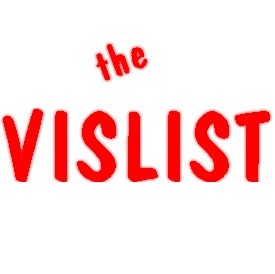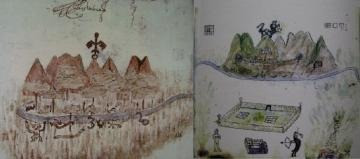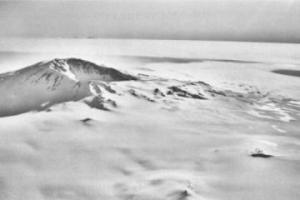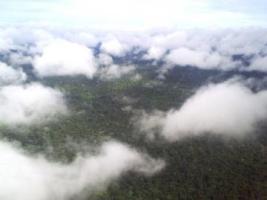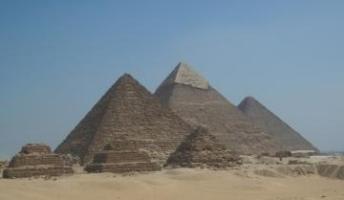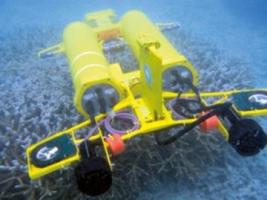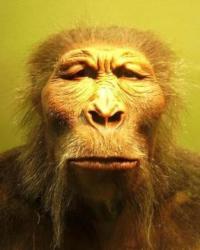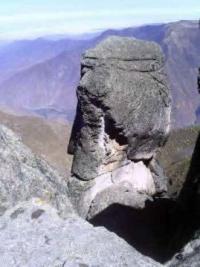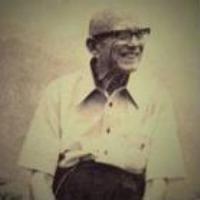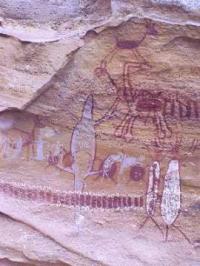Copy Link
Add to Bookmark
Report
VISION-LIST Digest Volume 12 Issue 29

VISION-LIST Digest Tue Jul 06 11:52:46 PDT 93 Volume 12 : Issue 29
- ***** The Vision List has changed hosts to TELEOS.COM *****
- Send submissions to Vision-List@TELEOS.COM
- Vision List Digest available via COMP.AI.VISION newsgroup
- If you don't have access to COMP.AI.VISION, request list
membership to Vision-List-Request@TELEOS.COM
- Access Vision List Archives via anonymous ftp to FTP.TELEOS.COM
Today's Topics:
Request: Help with ellipse/circle detection.
Effects of adapting field size
Book(s) for Vision course
KBVision
IAPR location
Post-doctoral Associate in Medical Computer Vision
IJCV stereo vision issue (reminder)
Special Issue on Topology and Geometry in Computer Vision
CFP - Sensor Fusion and Aerospace Applications
ECAI94
Announcement: MORPHOLOGY DIGEST
Workshop on Computer Vision for Space Applications
BMVC93 Provisional Programme and Registration Form
13TH Leeds Statistical Research Workshop
workshop
----------------------------------------------------------------------
Date: Wed, 30 Jun 1993 06:12:01 GMT
From: jev1@unix.bton.ac.uk (Jim Vaughan)
Organization: University of Brighton, UK
Subject: Request: Help with ellipse/circle detection.
Can anyone help me? I am trying to find references or code for
detecting circles or ellipses in digital images.
I am particularly interested in the Hough transform, since it is
known for its robustness.
Thanks in advance,
Jim Vaughan Telephone: +44 (0) 273 642200
Image Processing Research Unit Direct Line: +44 (0) 273 642247
University of Brighton, Lewes Road Fax: +44 (0) 273 642255
Brighton, BN2 4GJ, England Email: jev1@unix.bton.uk.ac
------------------------------
Date: Fri, 2 Jul 93 14:54:57 -0400
From: young@predator.cs.gmr.com
Subject: Effects of adapting field size
I am looking for references to vision studies on the effects of
adapting field size on the color of test patches. This seems like
something many people must have done but a quick survey turned up no
references. Anyone have any pointers to the literature?
------------------------------
Date: Wed, 30 Jun 93 15:57:09 -0400
From: Jonathan A. Marshall <marshall@cs.unc.edu>
Subject: Book(s) for Vision course
I will be teaching an introductory graduate-level course on Visual
Perception this Fall, and I'm trying to find a good book or two to use
as texts.
I'd really appreciate any recommendations that you might be able to
offer on appropriate books. I'm looking for books that contain
substantial material on psychophysics, neurobiology, and computation
related to vision.
My course is normally taught in Psychology departments to introduce
Psychology students to visual perception. My course will have the
additional purpose of introducing Computer Science students (as well
as Psychology students) to the subject.
I will collect the replies and redistribute them electronically for
everyone's benefit.
Thanks!
Jonathan A. Marshall marshall@cs.unc.edu =
Department of Computer Science =
CB 3175, Sitterson Hall =
University of North Carolina Office 919-962-1887 =
Chapel Hill, NC 27599-3175, U.S.A. Fax 919-962-1799 =
------------------------------
Date: 29 Jun 1993 13:57:07 +1000
From: irrgang@syd.dit.CSIRO.AU (Rosemary Irrgang)
Organization: CSIRO Division of Info Tech, Sydney, Australia
Subject: KBVision
Re KBVision with "Knowledge Module"
Has anyone on the net tried the product KBVision for
adding knowledge to image processing? Our group is considering
its use for knowledge based interpretation of medical X Ray images.
It would be a great help to get some comments by users of the package.
Thanks in advance
Rosemary Irrgang
CSIRO Division of Information Technology
Sydney Australia
Email irrgang@syd.dit.csiro.au
------------------------------
Date: Mon, 5 Jul 93 12:23:12 EDT
From: jdavis@eola.cs.ucf.edu (James Davis )
Subject: IAPR location
Does anyone know where I can purchase a copy of
IAPR Workshop on Machine Vision Applications (1992)
or know the publisher?
Jim Davis
jdavis@eola.cs.ucf.edu
------------------------------
Date: Fri, 2 Jul 93 17:54:55 EDT
From: Amir A. Amini <amini@noodle.med.yale.edu>
Subject: Post-doctoral Associate in Medical Computer Vision
Postodoctoral Associate in Medical Computer Vision
Yale University
New Haven, CT
There will be one or two openings for postdoctoral associates in the
department of diagnostic radiology at Yale University. Joint
appointments may be possible in engineering and applied science
following start of appointment. The specific projects of interest are
in the area of measurement of non-rigid motion and deformation from a
sequence of diagnostic images. The ideal candidate should have a PhD
in Electrical Engineering, Computer Science, or a related field,
and should have good knowledge of computer vision techniques.
Please submit a copy of your CV, and names and addresses of 3 references to
Amir Amini
Division of Imaging Science
333 Cedar St., 325 BML
Yale University
New Haven, CT 06510
for more information, send e-mail to amini@noodle.med.yale.edu
------------------------------
Date: Mon, 28 Jun 93 15:47:16 PDT
From: lhm@robotics.Jpl.Nasa.Gov (Larry Matthies)
Subject: IJCV stereo vision issue (reminder)
CALL FOR PAPERS
International Journal of Computer Vision
SPECIAL ISSUE
on
STEREO VISION
Algorithms for stereo vision are reaching a level of maturity where they can
provide accurate, reliable range data for a variety of scenes. Concurrently,
advances in high speed computing are making stereo vision practical for several
applications, including interactive 3-D scene modeling for cartography and
real-time obstacle detection for robotic navigation. To portray the state of
the art, the International Journal of Computer Vision is releasing a call for
papers for a special issue on the theory and applications of stereo vision.
Topics of special interest include, but are not limited to:
- Theory and algorithms for stereo matching of static and dynamic scenes
- Performance modeling and evaluation techniques
- Perception planning and active sensor control for stereo vision
- Fusion of stereo with other sensing modalities
- Real-time computing architectures for stereo vision,
including VLSI implementations
- Significant system applications using stereo vision
Guest editors for this issue are Larry Matthies (JPL), Bob Bolles (SRI), and
Keith Nishihara (Teleos). Prospective authors are asked to submit 4 copies of
their paper to the address given below. Manuscripts must be submitted by
August 1, 1993.
Dr. Larry H. Matthies
Mail stop 107-102
Jet Propulsion Laboratory
4800 Oak Grove Drive
Pasadena, CA 91109
------------------------------
Date: Tue, 6 Jul 93 10:29:03 EDT
From: "Prof. Azriel Rosenfeld" <ar@parmenides.UMD.EDU>
Subject: Special Issue on Topology and Geometry in Computer Vision
CALL FOR PAPERS
JOURNAL OF MATHEMATICAL IMAGING AND VISION
Special Issue on
TOPOLOGY AND GEOMETRY IN COMPUTER VISION
Submission deadline: October 1, 1993
This special issue will consist of papers on mathematical aspects of the
description and processing of two- or higher-dimensional images. Papers
should be mathematically sound and should deal with precisely defined
geometric concepts; they should stress theoretical treatment rather than
applications. Examples of topics of interest include digital topology
and geometry, shape theory, mathematical morphology, and fuzzy geometry.
Interested authors are invited to submit original papers to this issue.
The papers should be sent (in hard copy only) to either of the guest
editors. Authors should follow the manuscript format described in the
Instructions for Authors which appears at the end of each issue. (Copies
can be obtained from the Guest Editors.) Papers submitted for this special
issue will be refereed in accordance with the standards of the journal.
Guest Editors:
Prof. T. Yung Kong Prof. Azriel Rosenfeld
Dept. of Computer Science Center for Automation Research
Queens College, CUNY University of Maryland
65-30 Kissena Blvd. College Park, MD 20742-3275
Flushing, NY 11367
EM: ykong@sparc4gs.cs.qc.edu EM: ar@cfar.umd.edu
------------------------------
Date: Fri, 25 Jun 1993 15:22:10 -0400 (EDT)
From: nn7e@vision2.ee.virginia.edu
Subject: CFP - Sensor Fusion and Aerospace Applications
Call for Papers and Announcement
SPIE Conference on
SENSOR FUSION AND AEROSPACE APPLICATIONS
April 5-8, 1994, Orlando, Florida
Conference Chair:
N.Nandhakumar, Univ of Virginia, Charlottesville, VA 22903
(804) 924-6108, nandhu@virginia.edu
Program Committee:
J.K. Aggarwal, Univ of Texas at Austin, Martin Beckerman, Oak Ridge
National Lab; Ruud Bolle, IBM T.J. Watson Research Center; C.H. Chien,
Lockheed Engineering and Sciences Co; Trent Depersia, ARPA; Keith Drake,
AbTech Corp.; Larry Green, Martin Marietta Labs; Sheldon Gruber, Case
Western Reserve Univ; Jim Leonard, Air Force Wright Lab; Suresh
Marapane, Univ of Tennessee, Knoxville; Banavar Sridhar, NASA, Ames;
Bikash Sabata, Wayne State Unive, Mohan Trivedi, Univ of Tennessee,
Knoxville; Vince Velten, WPAFB Avionics Lab; Y.F. Wang, Univ of
California, Santa Barbara
The formulation of the interpretation of a single image (of a general scene)
as a computational problem results in an under-constrained task. This
conference will feature approaches that have been investigated to alleviate
the ill-posed nature of sensor interpretation tasks. Papers are solicited
on topics dealing with the extraction of multiple types of information from
an image/sensor or from other sensory sources to constrain scene
interpretation.
Topics may include:
- the extraction and fusion of multiple cues from the
same image (e.g., integrating multiple shape-from-X
methods, integrating discontinuities in brightness,
texture)
- the use of multiple views of the scene (e.g., stereo,
motion computation, structure from motion)
- the fusion of information from different modalities of
sensing (e.g., IR, laser ranging, ultraviolet, acoustic,
MMW radar)
- model-based methods for integrating multiple sensors
- computational frameworks for sensor fusion (e.g.,
variational, statistical, AI, neural networks)
- architectures and parallel methods for sensor fusion
- results of psychophysical and electrophysiological
studies which may lead to new computational models for
intersensory perception
- applications of sensor fusion in automated target
recognition, mobile robot navigation, surveillance, etc.
Special and Invited Sessions are planned in the areas of
> SENSOR FUSION FOR NAVIGATION/GUIDANCE,
> SENSOR FUSION FOR SPACE ROBOTICS,
> FUSION OF ACTIVE and PASSIVE SENSING,
> SENSOR FUSION FOR ROBOT VISION,
> FUSION OF MMW-SAR IMAGERY with FLIR, LADAR, etc,
> SENSOR FUSION FOR MODEL-BASED ATR
Abstract Due Date: 14 September 1993
Manuscript Due Date: 7 March 1994
SUBMISSION OF ABSTRACTS
To qualify for acceptance, you must either fax or mail
ALL FOUR copies of your abstract by 14 September 1993
to:
OE/Aerospace Science and Sensing '93
SPIE, P. O. Box 10, Bellingham, WA 98227-0010
Shipping Address: 1000 20th St., Bellingham, WA 98225
Telephone: 206/676-3290; Telex 46-7053
Telefax: 206/647-1445; OPTO-LINK 206/733-2998
Internet spie@nessie.wwu.edu
Compuserve 71630,2177
YOUR ABSTRACT SHOULD INCLUDE THE FOLLOWING:
1. ABSTRACT TITLE
2. AUTHOR LISTING (principal author first) Full names
and affiliations AS THEY WILL APPEAR IN THE PROGRAM.
3. CORRESPONDENCE FOR EACH AUTHOR (Mailing address,
telephone, telefax, email address.)
4. SUBMIT TO: Sensor Fusion and Aerospace Applications
Conference, (N. Nandhakumar)
5. PRESENTATION: Please indicate your preference for
either "Oral Presentation" or "Poster Presentation."
6. ABSTRACT TEXT. 500 words typed on white paper.
7. BRIEF BIOGRAPHY (principal author only) 50 to 100
words.
CONDITIONS OF ACCEPTANCE:
Authors are expected to secure travel and accommodation
funding, independent of SPIE, through their sponsoring
organizations before submitting abstracts. Only
original material should be submitted. Abstracts should
contain enough detail to clearly convey the approach and
the results of the research. Government and company
clearance to present and publish should be final at the
time of submittal. Submissions may be placed in an oral
or poster session at the chair's discretion. Applicants
will be notified of acceptance by 4 JANUARY 1994.
PROCEEDINGS OF THE MEETING can be ordered through the
Advance Program. MANUSCRIPTS ARE REQUIRED OF ALL
ACCEPTED APPLICANTS AND MUST BE SUBMITTED IN ENGLISH BY
15 MARCH 1994. Copyright to the manuscript is expected
to be released for publication in the conference
Proceedings.
PAPER REVIEW.
Commercial papers, descriptions of papers with no
research content, and papers where supporting data or a
technical description cannot be given for proprietary
reasons will not be accepted for presentation in this
symposium. To assure a high quality conference, all
abstracts and Proceedings appears will be reviewed by
the Conference Chairs for technical merit and content.
CHAIR/AUTHOR BENEFITS
Chairs/authors/co-authors are accorded a reduced-rate
registration fee. Included with fee payment are a copy
of the Proceedings in which the participant's role or
paper appears, a complimentary one-year non-voting
membership in SPIE (if never before a member), and other
special benefits.
POSTER PRESENTATION
Interactive poster sessions will be scheduled in the
evenings, with SPIE providing authors with boards and
easels for presentation set-up. All conference chairs
encourage authors to contribute papers with technical
content that lends itself well to the poster format.
PLEASE INDICATE YOUR PREFERENCE ON THE ABSTRACT.
ORAL PRESENTATION
Each author is generally allowed 15 minutes plus a five-
minute discussion period. SPIE will provide the
following media equipment free of charge: 345 mm
carousel slide projectors, overhead projectors, and
electric pointers. Video and other equipment may be
rented by SPIE at the speaker's expense.
N. Nandhakumar E-mail: nandhu@virginia.edu
Elec Engr Dept, Univ. of Virginia, Phone: (804) 924-6108
Charlottesville, VA 22903-2442 Fax: (804) 924-8818
------------------------------
Date: Thu, 1 Jul 1993 14:45:24 GMT
From: vet@cs.utwente.nl (Paul van der Vet)
Organization: University of Twente, Dept. of Computer Science
Subject: ECAI94
E C A I '94
A M S T E R D A M
11th European Conference on Artificial Intelligence
Amsterdam RAI International
Exhibition and Congress Centre
The Netherlands
August 8-12, 1994
Call for Papers
Call for Workshop proposals
Exhibition
Call for Tutorial proposals
Organized by the European Coordinating Committee for Artificial
Intelligence (ECCAI)
Hosted by the Dutch Association for Artificial Intelligence (NVKI)
The European Conference on Artificial Intelligence (ECAI) is the
European forum for scientific exchange and presentation of AI
research. The aim of the conference is to cover all aspects of AI
research and to bring together basic research and applied research.
The Technical Programme will include paper presentations, invited
talks, panels, workshops, and tutorials. The conference is designed to
cover all subfields of AI, including non-symbolic methods.
ECAIs are held in alternate years and are organized by the European
Coordinating Committee for Artificial Intelligence (ECCAI). The 11th
ECAI in 1994 will be hosted by the Dutch AI Society (NVKI). The
conference will take place at the Amsterdam RAI, International
Exhibition and Congress Centre.
E X H I B I T I O N
An industrial and academic exhibition will be organized from August 9 - 11, 1994.
Detailed information will be provided in the second call for papers or can be obtained at
the conference office (for the adress see elsewhere).
S P O N S O R S (preliminary list)
Bolesian B.V.
Municipality of Amsterdam
University of Amsterdam
Vrije Universiteit Amsterdam
University of Limburg
C A L L F O R P A P E R S
T O P I C S O F I N T E R E S T
You are invited to submit an original research paper that represents a
significant contribution to any aspect of AI, including the principles
underlying cognition, perception, and action in humans and machines;
the design, application, and evaluation of AI algorithms and
intelligent systems; and the analysis of tasks and domains in which
intelligent systems perform. Theoretical and experimental results are
equally welcome. Papers describing innovative ideas are especially
sought providing such papers include substantial analysis of the
ideas, the technology needed to realize them, and their potential
impact.
Of special interest this year are papers which address applied AI. Two
kinds of papers are sought. The first category is case studies of AI
applications that address significant real-world problems and which
are used outside the AI community itself; these papers must justify
the use of the AI technique, explain how the AI technology contributed
to the solution and was integrated with other components, and most
importantly explain WHY the application was successful (or perhaps why
it failed) -- these "lessons learned" will be the most important
review criteria. The second category is for papers on novel AI
techniques and principles that may enable more ambitious real-world
applications. All the usual AI topics are appropriate. These papers
must describe the importance of the approach from an applications
context, in sufficient technical detail and clarity, and clearly and
thoroughly differentiate the work from previous efforts. There will be
special prizes for the best papers in both these areas.
S U B M I S S I O N O F P A P E R S
Authors are requested to submit to the Programme Chairperson 5 copies
of papers written in English in hardcopy format (electronic and fax
submissions will not be accepted).
Each submitted paper must conform to the following specifications.
Papers should be no longer than 5500 words including references. (Each
full page of figures counts as 1100 words.) Papers longer than this
limit risk being rejected without refereeing. A separate title page
should include the title, the name(s) of the author(s), complete
address(es), email, fax and telephone numbers, the specification of
between one and four Content Areas, preferably chosen from the list
below and an abstract (maximum 200 words). The title page should also
contain a declaration that the paper is unpublished, original work,
substantially different from papers currently under review and will
not be submitted elsewhere before the notification date other than to
workshops and similar specialized presentations with a very limited
audience. Papers should be printed on A4 or 8.5"x11" sized paper in
letter quality print, with 12 point type (10 chars/inch on a
typewriter), single spaced. Double sided printing is preferred.
Authors who wish to check that their submission will fit into the
final CRC format will be able to obtain detailed instructions
including a latex style file and example postscript pages after
October 15 by anonymous FTP from agora.leeds.ac.uk, directory ECAI94,
or by e-mailing ecai94-style@scs.leeds.ac.uk with a message body of
"help".
When submitting a paper an electronic mail message should also be sent
to ecai94-title@scs.leeds.ac.uk giving information in the format
specified below. If an intending author has no e-mail facilities then
this requirement is waived.
Papers should be sent to:
Programme Chairperson: Dr Tony Cohn
Division of Artificial Intelligence
School of Computer Studies
University of Leeds
Leeds LS2 9JT
United Kingdom
Tel.: (+44)-532-33.54.82
Fax: (+44)-532-33.54.68
E-mail: ecai94@scs.leeds.ac.uk
TITLE: <title of paper>
AUTHOR: <first author last name, first name>
AFFILIATION: <first author affiliation>
AUTHOR: <second author last name, first name>
AFFILIATION: <second author affiliation>
...<repeat for all authors>
CORRESPONDENCE ADDRESS: <give name, address, fax and telephone on successivelines>
CORRESPONDENCE E-MAIL: <give correspondence e-mail address>
CONTENT AREAS: <at most four content areas, separated by semi-colons>
ABSTRACT: <text of the abstract>
The content areas preferably should be drawn from the topics listed
below. The text of the abstract field may include formatting commands,
if desired, but these should be omitted from all other fields. Work
described in an accepted paper may also be illustrated with a
videotape or a demo. Special sessions will be scheduled for video
presentations and demos. Authors wishing to show a videotape or a demo
should specify the duration and the requirements of the videotape/demo
when submitting their paper for review. Reviewing criteria do not
apply to these tapes. Only the submitted papers will be peer-reviewed.
Authors wishing to augment their paper presentation with a video
should submit a tape only after their paper has been accepted. For
details concerning tape format, see the video track description below.
C O N T E N T A R E A S
Abduction; AI and Creativity; Artificial Life; Automated Reasoning;
Automatic Programming; Belief Revision; Case Studies of AI
Applications; Case-Based Reasoning; Cognitive Modelling; Common Sense
Reasoning; Communication and Cooperation; Complexity of Reasoning;
Computational Theories in Psychology; Computer-Aided Education;
Concept Formation; Connectionist and PDP Models for AI;
Constraint-Based Reasoning; Corpus-Based Language Analysis; Deduction;
Description Logics; Design; Diagnosis; Discourse Analysis; Discovery;
Multi-Agent Systems; Distributed Problem Solving; Enabling Technology
and Systems; Epistemological Foundations; Expert System Design;
Generic Applications; Genetic Algorithms; Integrating AI and
Conventional Systems; Integrating Several AI Components; Kinematics;
Knowledge Acquisition; Knowledge Representation; Large Scale Knowledge
Engineering; Logic Programming; Machine Architectures; Machine
Learning; Machine Translation; Mathematical Foundations; Model Based
Reasoning; Monitoring; Natural Language Front Ends; Natural Language
Processing; Navigation; Neural Networks; Nonmonotonic Reasoning;
Philosophical Foundations and Implications; Plan Recognition; Planning
and Scheduling; Principles of AI Applications; Qualitative Reasoning;
Reactivity; Reasoning About Action; Reasoning About Physical Systems;
Reasoning With Uncertainty; Resource Allocation; Robotics; Robot
Navigation; Search; Sensor Interpretation; Sensory Fusion/Fission;
Simulation; Situated Cognition; Social Economic, Ethical and Legal
Implications; Spatial Reasoning; Speech Recognition; Standardisation,
Exchange and Reuse of Ontologies or Knowledge; Parsing; Semantic
Interpretation; Pragmatics; System Architectures; Temporal and Causal
Reasoning; Terminological Reasoning; Text Generation and
Understanding; Theorem Proving; Truth Maintenance; Tutoring Systems;
User Interfaces; User Models; Verification, Validation and Testing of
Knowledge-Based Systems; Virtual Reality; Vision and Signal
Understanding.
T I M E T A B L E
Papers must be received by the Programme Chairperson no later than
January 8, 1994. Acceptance letters will be posted no later than
March 12, 1994. Final camera-ready papers must be received by April
19, 1994.
P A N E L S
Proposals for panel discussions (up to 1000 words) should be sent to
the Programme Chairperson by Februar 8, 1994. E-mail is preferred.
P R I Z E S
As in previous years, a prize for the best paper as determined by the
Programme Committee will be awarded; the Digital Equipment Prize and a
prize for the best paper from Eastern Europe will also be awarded.
Additionally, this year there will be two new prizes which will be
awarded for application papers in the two categories described above
under "Case Studies of AI Applications" and "Principles of AI
Applications".
V I D E O S U B M I S S I O N S
In addition to the possibility of video enhanced papers described
above, videos unaccompanied by papers may be submitted for
presentation in special video track sessions. The purpose of these
videos should be to demonstrate the current levels of usefulness of AI
tools, techniques and methods. Videos presenting research arising out
of interesting real world applications are especially sought. Authors
should submit one copy of a videotape of 10 minutes maximum duration
accompanied by a submission letter that includes:
* Title
* Full names, postal addresses, phone numbers and e-mail addresses of
all authors
* Duration of tape in minutes
* Three copies of an abstract of one to two pages in length,
containing the title of the video, and full names and addresses of the
authors
* Author's permission to copy tape for review purposes
The timetable and conditions for submission, notification of
acceptance or rejection, and receipt of final version are the same as
for the paper track. All videotape submissions must be made to the
Programme Chair. Tapes cannot be returned; authors should retain
extra copies for making revisions. All videos must be in VHS-PAL
format. An e-mail message giving the title, author, address and
abstract should be e-mailed to ecai94-video@scs.leeds.ac.uk (unless
the submitter has no e-mail access in which case this condition is
waived).
Tapes will be reviewed and selected for presentation during the
conference. The following criteria will guide the selection:
Level of interest to the conference audience
Clarity of goals, methods and results
Presentation quality (including audio, video and pace).
Preference will be given to applications that show a high level of
maturity. Tapes that are deemed to be advertising commercial products,
propaganda, purely expository materials, merely taped lectures or
other material not of scientific or technical value will be rejec-
ted.
P R O G R A M M E C O M M I T T E E
C. Baeckstroem, Sweden
J.P. Barthes, France
I. Bratko, Slovenia
P. Brazdil, Portugal
J. Breuker, The Netherlands
F. Bry, Germany
R. Casati, Switzerland
C. Castelfranchi, Italy
J. Cuena, Spain
Y. Davidor, Israel
L. Farinas del Cerro, France
F. Fogelman Soulie, France
J. Fox, United Kingdom
G. Friedrich, Austria
A. Frisch, United Kingdom
C. Froidevaux, France
A. Fuhrmann, Germany
A. Galton, United Kingdom
J. Ganascia, France
M. Ghallab, France
J. Goncalves, Italy
G. Gottlob, Austria
F. Giunchiglia, Italy
E. Hajicova, Czech Republic
P. Hill, United Kingdom
S. Hoelldobler, Germany
D. Hogg, United Kingdom
G. Kelleher, United Kingdom
G. Kempen, The Netherlands
M. King, Switzerland
A. Kobsa, Germany
M. Lenzerini, Italy
R. Lopez de Mantaras, Spain
N. Mars, The Netherlands
J. Martins, Portugal
P. Meseguer, Spain
R. Milne, United Kingdom
B. Nebel, Germany
R. Nossum, Norway
H.J. Ohlbach, Germany
E. Oja, Finland
E. Oliveira, Portugal
E. Plaza, Spain
J. Rosenschein, Israel
Ph. Smets, Belgium
L. Spanpinato, Italy
O. Stock, Italy
P. Struss, Germany
P. Torasso, Italy
R. Trappl, Austria
L. Trave-Massuyes, France
W. van de Velde, Belgium
W. Wahlster, Germany
T. Wittig, Germany
W O R K S H O P S
A full workshop programme is planned for ECAI '94. These will take
place in the two days immediately before the main technical
conference, i.e., on August 8 and 9, 1994. Workshops may last for
either 1 or 2 days.
They will give participants the opportunity to discuss specific
technical topics in a small, informal environment, which encourages
interaction and exchange of ideas. Workshops may address any topic
covered by the list of areas given above [i.e., in the general call
for papers]. Workshops on applications and related issues are
especially welcome. Workshop proposals should be in the form of a
draft call for participation containing a brief description of the
workshop and the technical issues to be addressed, the proposed format
and the kind of contributions solicited, and the names and addresses
(postal, phone, fax, e-mail) of the organizing committee of the
workshop. Additionally, proposals should specify the number of
expected participants and some names of some potential participants.
Proposers are encouraged to send their draft proposal to potential
participants for comments before submission.
The organizers of accepted workshops are responsible for producing a
call for participation, for reviewing requests to participate and
for scheduling the workshop activities within the constraints set by
the conference organizers.
Workshop proposals should be sent to the Workshop Chairpersons as soon
as possible, but not later than November 1, 1993. Electronic
submission (plain ascii text) is highly preferred, but hard copy
submission is also accepted in which case 5 copies should be
submitted. Proposals should not exceed 2 sides of A4 (i.e.,
approximately 120 lines of text). The proposals will be reviewed by
the Programme Committee and the organizers will be notified not later
than December 31, 1993.
Details of all accepted workshops will be available by anonymous FTP
from cs.vu.nl, directory ECAI94 by January 31, 1994; alternatively
send electronic mail to ecai94-workshops@cs.vu.nl. It should be
noted that registration for the main conference will be required in
order to attend an ECAI '94 workshop.
Workshop Chairpersons: Prof.dr Jan Treur
Dr Frances Brazier
Vrije Universiteit Amsterdam
Department of Computer Science
De Boelelaan 1081 a
1081 HV Amsterdam, The Netherlands
Tel.: (+31)-20-548.55.88
Fax: (+31)-20 -642.77.05
E-mail: ecai94-workshops@cs.vu.nl
T U T O R I A L S
The ECAI '94 Organizing Committee invites proposals for the Tutorial
Programme for ECAI '94. The tutorials will take place on August 8 and
9, 1994. Anyone who is interested in presenting a tutorial, or who has
suggestions concerning possible speakers or topics is invited to
contact the Tutorial Chair.
A list of suggested topics that may be covered by tutorials is given
below, but the list is only a guide. Other topics, both related to
these and quite different from them, will be considered:
Model-based reasoning; Natural language processing; Real-time
reasoning; AI & databases (deductive databases, integrity
constraints); Distributed AI, multi-agent systems; AI in industry
(banking, networking, engineering); Knowledge sharing and reuse;
Machine learning; Neutral Networks; Probabilistic reasoning and
uncertainty; Genetic algorithms; Case-based reasoning; KBS design
and methodology (including knowledge acquisition); Planning and
scheduling; Hypermedia/multi-media in AI
We are interested in:
Proposals for the tutorials to be presented at the ECAI '94
Suggestions for topics (either an expression of interest in any of the
topics above or in other topics)
Suggestions for possible speakers for the tutorials (who would you
like to hear if you attend a tutorial?)
Anyone interested in presenting a tutorial should submit a proposal
containing the following information:
* A brief description and outline of the tutorial
* The necessary background and the potential target audience
* A description of why the tutorial topic is of interest to the ECAI
'94 audience
* A brief resume of the presenters
Each tutorial will last for four hours, and must be offered by a team
of presenters (usually two people, possibly three). Those submitting a
proposal should keep in mind that tutorials are intented to provide an
overview of a field or practical training in an area. They should
present reasonably well agreed upon information in a balanced way.
Tutorials should not be used to advocate a single avenue of research,
nor should they promote a product. Presenters of a tutorial will
receive a remuneration based on the number of participants in the
tutorial.
Proposals and suggestions must be received by September 1, 1993.
Decisions about the tutorial programme will be made by September 30,
1993. Speakers should be prepared to submit completed course materials
by May 6, 1994.
Proposals, suggestions and enquiries should be sent (preferably
electronically) to:
Tutorial Chairperson: Dr Frank van Harmelen
SWI
University of Amsterdam
Roetersstraat 15
1018 WB Amsterdam
Tel.: (+31)-20-525.61.21, or
(+31)-20-525.67.89
Fax: (+31)-20-525.68.96
E-mail: ecai94-tutorials@swi.psy.uva.nl
Details of all tutorials will be available by September 30, 1993 by
anonymous FTP from swi.psy.uva.nl, directory ECAI94.
I N F O R M A T I O N
For more information please contact:
Organizing Chairperson: Workshop Chairpersons:
Prof.dr Jaap van den Herik Prof.dr Jan Treur
Dutch Association for Artificial Dr Frances Brazier
Intelligence (NVKI) Vrije Universiteit Amsterdam
University of Limburg Department of Computer Science
Department of Computer Science De Boelelaan 1081 a
P.O. Box 616 1081 HV Amsterdam
6200 MD Maastricht The Netherlands
The Netherlands Tel.: (+31)-20-548.55.88
Tel.: (+31)-43-88.34.77 Fax: (+31)-20-642.77.05
Fax: (+31)-43-25.23.92 E-mail: ecai94-workshops@cs.vu.nl
E-mail: bosch@cs.rulimburg.nl
Programme Chairperson: Tutorial Chairperson:
Dr Tony Cohn Dr Frank van Harmelen
Division of Artificial SWI
Intelligence University of Amsterdam
School of Computer Studies Roetersstraat 15
University of Leeds 1018 WB Amsterdam
Leeds LS2 9JT The Netherlands
United Kingdom Tel.: (+31)-20-525.61.21, or
Tel.:(+44)-532-33.54.82 (+31)-20-525.67.89
Fax: (+44)-532-33.54.68 Fax: (+31)-20-525.68.96
E-mail: ecai94@scs.leeds.ac.uk E-mail: ecai94-tutorials@swi.psy.uva.nl
CONFERENCE OFFICE:
Erasmus Forum
c/o ECAI '94
Marcel van Marrewijk, Project Manager
Mirjam de Leeuw, Conference Manager E C A I '94
Erasmus University Rotterdam AMSTERDAM
P.O. Box 1738
3000 DR Rotterdam
The Netherlands
Tel.: (+31)-10-408.23.02
Fax: (+31)-10-453.07.84
E-mail: M.M.deLeeuw@apv.oos.eur.nl
ECCAI
EUROPEAN COORDINATING COMMITTEE FOR
ARTIFICIAL INTELLIGENCE
------------------------------
Date: Wed, 30 Jun 1993 16:42:14 +0200
From: Henk.Heijmans@cwi.nl
Subject: Announcement: MORPHOLOGY DIGEST
Announcement: MORPHOLOGY DIGEST
We are happy to announce the "Morphology Digest".
This digest is intended as a forum between workers in the field of
Mathematical Morphology and related fields (stochastic geometry, random
set theory, image algebra, etc.).
The Morphology Digest intends to provide fast and up-to-date information on:
1. Conferences, workshops, courses
2. Books, articles, reports, PhD theses
3. Algorithms, software, hardware
4. Available research positions
5. Bibliographical data
relevant to anyone interested in mathematical morphology.
The Morphology Digest also seeks to disperse informal contributions
ranging from elementary questions about specific morphological algorithms
to critical essays on the nature of mathematical morphology.
The frequency of the digest depends on the number of submissions.
Our estimate is to have an issue once every month.
Subscribe: email to morpho@cwi.nl with "subscribe" as subject
and empty message body.
Unsubscribe: email to morpho@cwi.nl with "unsubscribe" followed by email address
as subject and empty message body.
Submissions: email to morpho@cwi.nl with "submit" as subject.
Archive site: anonymous ftp to ftp.cwi.nl; directory /pub/morphology/digest
The email addresses will only be used for sending the digest and not for other
purposes.
Henk Heijmans
Centre for Mathematics and Computer Science (CWI)
Kruislaan 413
NL 1098 SJ Amsterdam, The Netherlands
------------------------------
Date: 2 Jul 93 14:11:33 GMT
From: giraudon@satie.inria.fr (Gerard Giraudon)
Organization: Inria Sophia Antipolis
Subject: Workshop on Computer Vision for Space Applications
WORKSHOP ON COMPUTER VISION FOR SPACE APPLICATIONS
September 22-23-24, 1993
Palais des Congres
Antibes - Juan les Pins (Alpes Maritimes)
FRANCE
FINAL PROGRAM
We would like to invite computer vision researchers and aerospace
specialists to participate in a workshop on Computer Vision and Space
Robotic Applications to be held in Antibes, France, September 22-23-24,
1993.
Many industrial and government laboratories around the world are
developing systems for space missions, such as the exploration of Mars
and the construction of a space station. Computer vision
is one of the key components for the automation of such systems. The
goal of this workshop is to bring together an international forum of
academic, industrial, and government researchers/engineers to present
and discuss possible applications of computer vision in space, and
then present and discuss computer vision techniques that are applicable
to these applications.
Co-Chairmen: Plancke (ESA/ESTEC) and Giraudon (INRIA)
Program Committee: Berthod (INRIA) Bolles (SRI)
Buxton (GEC) Elvfing (ESA/ESTEC)
Eklundh (RIT) Faugeras (INRIA)
Henderson (U.of Utah) Matthies (JPL/NASA)
Menardi (ESA/ESTEC) Proy (CNES)
Scoon (ESA/ESTEC) Andreau (Aerospatiale)
The workshop is organized into four sessions for 43 high-quality papers:
- Planetary mission
- In orbit operations
- Systems and architecture
- Fundamental aspects of computer vision
For each session, an invited talk will be presented and oral and poster
presentations
will be held in single track.
A panel is organized about the following discussion :
Is Computer Vision necessary for Planetary missions and for what ?
TUESDAY 09/21 16h-20h : Start of Registration
18h-21h : Pre-Workshop Gettogether
WEDNESDAY 09/22
9h-9h30 : registration
9h30-10h30 : invited talk : Planetary mission (by Donna Pivirotto - JPL/NASA
Survey of mission : task definitions and constraints
Derivations of requirements for
Computer Vision
10h30-11h : Pause
PLANETARY MISSION SESSION
11h-11h30 : On-board vision system of mobile robot for planetary exploration
C. Proy (CNES),
B. Hotz, O. Faugeras, P. Garnesson and M. Berthod - INRIA Sophia -
France
11h30-12h : Range sensing for Planetary Rovers
Larry Matthies, Pierrick Grandjean, Todd Litwin, Brian Wilcox and
Jack Morrison - Jet Propulsion Laboratory, California - USA
12h-12h30 : Local perception for mobile robot navigation in natural terrain :
Two approaches
M. Hebert and E. Krotkov - Carnegie Mellon University,
Pittsburgh - USA
Lunch time (12h30 -> 14h)
14h-16h : POSTER (Planetary mission and fundamental aspects of computer
vision)
Modelisation en continu de scenes 3D utilisant la stereovision par
correlation
B. Hotz, Z. Zhang and P. Fua - INRIA Sophia - France
Obstacle detection and 3D reconstruction by flight-time laser range
finder
T. Lecoeur-Taibi and P. Besesty - LETI - France -
An Active Vision System for visual-aided navigation
T. Vieville, - INRIA Sophia - France
P. Jeanne, Y. Le Guilloux - Sagem - Cergy Pontoise - France
A multilevel approach to stereo matching
Yibing Yang - Harvard University, Cambridge - USA
High resolution model based stereo
Ngoc Anh LE and Philippe Saint Marc - MATRA-MS2I - France
Nicholas Ayache - INRIA Sophia - France
Contour-based disparity limits in stereo vision
Jean-Luc Lotti and Gerard Giraudon - INRIA Sophia - France
Recovering segmented descriptions from stereo
Ronald C.K. Chung and Ramakant Nevatia - University of Southern
California, L.A. - USA
Stereomatching of satellite pushbroom images
Stephen M Parkes, Christopher P Chaloner and Paul Brooks
British Aerospace Space - England
16h-16h30 : Pause
PLANETARY MISSION SESSION (follow on)
16h30-17h : Vision system to improve autonomy of marsokhod 96
C. Proy and M. Lamboley - CNES - France - T.N. Guyen - LAS
- France
17h-17h30 : Vision-based localization
William B. Thompson, Thomas C. Henderson, Thomas L. Colvin,
Lisa B. Dick and Carolyn M. Valiquette
University of Utah - Salt Lake City - USA
17h30-18h : 3D High resolution elevation model for exploring planetary bodies
Laurent Gabet and Laurent Renouard - ISTAR - France
18h-18h30 : Computer vision for landing site identification
Wolfgang Polzleitner and Gerhard Paar
JOANNEUM RESEARCH - Austria
THURSDAY 09/23
9h-10h : Invited talk : Analysis of mission requirements and technology
developments
Synthesis of future missions related to vision and signal processing
and presentation of the on-going technology development
for on-board applications
By R. Creasey (ESTEC / ESA)
10h-10h30 Pause
IN ORBIT OPERATION SESSION
10h30-11h : Development of a real-time tracking laser range scanner for space
applications
F. Blais, J.A. Beraldin, M. Rioux and R.A Couvillon
National Research Council of Canada
S.G. MacLean - Canadian Space Agency - Quebec - Canada
11h-11h30 : Telerobotic inspection for remote space platforms
J. Balaram and S. Hayati
Jet Propulsion Laboratory - California - USA
11h30-12h : Evaluation tests and preliminary design of a stereoscopic computer
vision
system for space robot applications
S. Losito, D. Maddalena and M. Poli
Tecnomare S.P.A. - Venezia - Italy
12h-12h30 : Object localization for advanced space robotics
JP Bernoville, Y. Le Guilloux and H. Lamarre - SAGEM - France
12h30 -> 14h Lunch
14h-16h : POSTER (in Orbit operation and fundamental aspects of computer
vision)
The use of image sequences to track human motion by spatio-temporal
segmentation
Frederic Elsner and Khaled Hassine - Universite de
Valenciennes - France
Real-time image processing for science payload operations
T. Roesgen - Onboard Data Division - ESA-ESTEC (WDS) - Pays
Bas
Integration of shape from shading and stereo algorithm for surface
reconstruction
Lucien Nocera - Dassault Aviation Saint Cloud - France
Marc Berthod, Gerard Giraudon and Ruihua Ma - INRIA Sophia -
France
Surface level integration of multiple range images
Yang Chen and Gerard Medioni
University of Southern California - Los Angeles - USA
Multi sensor fusion on Points, line segments and surface segments in
3D space
J. van Lawick van Pabst and P.F.C. Krekel
TNO Physics and Electronics Laboratory - The Hague - Pays Bas
A model-based system for localization and tracking
Magnus Andersson and Peter Nordlund
Royal Institute of Technology (KTH) - Stockholm - Sweden
Modelled object pose estimation and tracking by monocular vision
N. Daucher, M. Dhome, J.T. Lapreste and G. Rives
Blaise Pascal University - Aubiere - France
16h-16h30 : Pause
FUNDAMENTAL ASPECTS OF COMPUTER VISION SESSION
16h30-17h : Using Visual Feedback to drive a mobile robot on its trajectory
T. Vieville, B. Hotz, H. Mathieu, M. Buffa L. Robert, P. Facao, O. Faugeras
(Inria- Sophia Antipolis FRANCE)
F. Romann, J.T. Audren (SFIM - Massy - FRANCE)
17h-17h30 : A binocular active vision system using space variant sensors :
exploiting
autonomous behaviors for space applications
C. Capurro, F. Panerai, E. Grosso and G. Sandini
Universita di Genova facolta di ingegneria - Italy
17h30-18h : Determination of the pose of an articulated object from a single
perspective view
M. Dhome, A. Yassine and J.M. Lavest -
URA 830 of the CNRS - Clermond Ferrand - France)
18h-19h30 : Cocktails and buffet
19h30 - 21h30 : PANEL : Is Computer Vision necessary for Planetary missions and
for what ?
(composed by people of agencies and industrial partners
(B. Buxton, C. Proy, L. Matthies, G. Scoon, M. Andreau, Mc Lean ..)
and on the other hand, specialists of computer vision.
(Berthod, Bolles, Eklundh, Faugeras, Henderson, Nevatia , Thorpe...)
Moderator : Plancke -Giraudon
FRIDAY 09/24
9h-10h : Invited talk : "The Space Vision System on Mission STS-52" by McLean
(Canadian space agency)
10h-10h30 Pause
ARCHITECTURE AND SYSTEMS SESSION
10h30-11h : Development of a smart camera optimized for telescience operations
E.A. Kuijpers dans M. Versteeg - National Aerospace Laboratory
NLR - Netherlands
and M. Sabbatini (ESTEC - Netherlands) and T. Gjaltema (ICT)
11h-11h30 : A processing architecture for space-based computer vision systems
Stephen M Parkes, Andrew R Gillions and Steven D Price
British Aerospace Space Systems Ltd - England
11h30-12h : Message passing concurrent computer for on-board space systems
Anne Dufour, J.Y. Le Gall and F. Simon - ALCATEL Toulouse -
France
12h00 -> 13h30 Lunch
13h30-14h30 : Invited talk : "Machine Learning and Human Interfaces for the CMU
Navlab"
by Chuck Thorpe (from C.M.U (USA))
14h30-15h30 : POSTER SESSION (fundamental aspects of computer vision and
Architecture-System)
Error trade offs for the cross ratio in model based vision
S.J. Maybank - GEC Hirst Research Centre - England
Image enhancement using geometry-driven diffusion
M. Proesmans, E.J. Pauwels, L.J Van Gool, T. Moons and A.
Oosterlinck
ESAT-MI2 - Katholieke Universiteit Leuven - Belgium
Hand-Eye calibration
Radu Horaud and Fadi Dornaika - LIFIA - IRIMAG - Grenoble -
France
Stereovision on programmable active memories
Laurent Moll - Ecole Polytechnique - France
Jean Vuillernin - DEC - PRL - Paris - France
Gerard Berry - Ecoles des Mines - INRIA Sophia Antipolis -
France
High performance vision architecture
Dr. B.K. Madahar - GEC-Marconi HRC - England
A machine vision systeme for a free-flying robot
Chiun-Hong Chien - Lockheed Engineering and Sciences Company,
Houston - USA
Evaluation of codings of space images with respect to their
astronomical semantics
Matthias F. Carlsohn and Mireille Y. Louys
E.N.S.P.S., l'Universite Louis Pasteur - Strasbourg - France
Francois Bonnarel and Philippe Paillou
Centre de donnees Astronomiques de Strasbourg - Observatoire
Astronomique Strasbourg-
Transputer based onboard computer
Andras Balazs, Jozsef Biro and Sandor Szalai
KFKI RMKI - Budapest - Hungary
15h30-16h : Pause
FUNDAMENTAL ASPECTS OF COMPUTER VISION SESSION (follow on)
16h-16h30 : Terrain matching for passive navigation system
E. Zekri - ESTEC wdp - Netherlands
16h30-17h : Scene analysis for planetary mission
V. Clement, F. Sandakly, G. Giraudon et M. Berthod (INRIA Sophia -
France)
17h-17h30 : Recognition of 3.D objects from 2.D groupings
Fridtjof Stein and Gerard Medioni
University of Southern California - USA
17h30 : End of workshop
Conference registration :
Student : 1200 FF
Academic : 1700 FF
Industrial : 2600 FF
Hotel registration Form :
- hotel ** : single : 285,00 FF
double : 370,00 FF
- hotel *** : single : 415,00 FF
double : 520,00 FF
- hotel **** : single : 670,00 FF
double : 990,00 FF
These prices included taxes and breakfast.
Reserved rooms will be held with a first night's deposit or with an accepted
credit card number and signature.
nuit.
For additional information or for a copy of the final program
contact juncker@sophia.inria.fr or perez@sophia.inria.fr
------------------------------
Date: Fri, 2 Jul 1993 09:58:21 +0100 (BST)
From: J.Illingworth@ee.surrey.ac.uk
Subject: BMVC'93
British Machine Vision Conference BMVC'93
PROVISIONAL PROGRAMME AND REGISTRATION FORM
*******************************************
University of Surrey, Guildford. U.K.
21-23 September 1993
The British Machine Vision Conference is the main annual U.K. forum for
the presentation of research results in the areas of machine vision and
pattern recognition. This two and a half day conference will take place
from Tuesday 21 September to Thursday 23 September on the pleaseant
landscaped campus of the University of Surrey, Guildford.
The conference will be accompanied by a small exhibition of commercial
and industrial products related to computer vision.
The conference will also be preceeded by a half-day topical seminar on
``Wavelets'' which will be given by Roland Wilson of Warwick University.
The University of Surrey is situated in the historic cathedral town of
Guildford. It is only 30 miles from Central London and has excellent
road and rail links to the rest of the U.K.. It is also sited close to
and halfway between Londons major international airports, Heathrow
and Gatwick.
Monday 20 September 1993
Afternoon Tutorial: 2 p.m. to 5:30 p.m.
AN INTRODUCTION TO WAVELET TRANSFORMS
R. Wilson, Department of Computer Science , Warwick University.
The last five to ten years have seen the development of a new class of
signal representation - the wavelet transform - which has placed
multiresolution signal analysis on a rigorous footing and has opened up
new possibilities for efficient multiresolution methods of image coding
and analysis. While there have been many publications on wavelets, a
combination of some unusual notation and sophisticated mathematics have
not helped the general reader to assess their potential in applications.
The aim of the tutorial will be to answer the following questions :
* What are wavelets and how do they relate to more established
multiresolution methods ?
* How can wavelet transforms be computed efficiently ?
* What can they be used for ?
* What are their limitations ?
The only prerequisite assumed will be a degree of familiarity with the
conventional signal processing concepts of filtering and linear
transformation. The tutorial session will include examples showing how
various wavelet transforms may be used in low-level vision tasks,
such as boundary detection, stereopsis and texture analysis.
It will be concluded with a survey of recent developments in the field.
\medskip
Cost: 20 pounds (free to full-time research students)
Tuesday 21 September 1993
Invited Lecture
***************
``Issues in Robot Vision''
Prof Goesta Granlund, University of Linkoeping, Sweden
Pattern Analysis
****************
``Automatic Machine Learning of Decision Rules for Classification
Problems in Image Analysis''
Pudil, Novovicova and Kittler (Univ of Surrey)
``Testing Face Recognition''
Robertson and Craw (Aberdeen Univ)
Active Vision
*************
``Saccade and Pursuit on an active Head/Eye Platform''
Bradshaw, McLauchlan, Reid and Murray (Oxford Univ)
``Estimating Rigid 3D Motion by Stereo Fixation of Vertices''
Yang and Illingworth (Univ of Surrey)
``Active Fixation for Scene Exploration''
Brunnstrom, Eklundh and Uhlin (KTH, Stockholm)
``Active Animate Stereo Vision''
Urquhart, Siebert, McDonald and Fryer (Turing Inst. and Strathclyde Univ)
``Model Driven Selection using Texture''
Syeda-Mahmood (MIT)
Recognition and Pose
********************
``Recognising Objects on the Ground Plane''
Tan, Sullivan and Baker (Reading Univ)
``Determination of the pose of an articulated object from a single
perspective view''
Dhome, Yassine and Lavest (Blaise Pascal Univ, France)
``Statistical Partial Constraints for 3D Model Matching and Pose
Estimation Problems''
Waite, Orr, Fisher and Hallam (Edinburgh Univ and ARR Salford)
``Relative positioning from Model Indexing''
Carlsson (KTH, Stockholm)
``On Computing the perspective transformation matrix and camera
parameters''
Tan, Sullivan and Baker (Reading Univ)
Shape 1
*******
``Isotropic Regularisation''
Nielsen (DIKU, Copenhagen)
``Robust Shape from Shading''
Jones and Taylor (Manchester Univ)
``Model Construction from a single perspective view using shape from
symmetry''
Attwood, Sullivan and Baker (Reading Univ)
``Shape from Copies''
Van Diest, Moons, Van Gool and Oosterlinck (Leuven Univ)
Wednesday 22 September 1993
Invited Lecture
***************
``Geon based Object Recognition''
Prof Irving Biederman, University of California
Texture
*******
``Parallel Texture Region Segmentation using a Pearl Bayes Network''
Ducksbury (DRA, Malvern)
``Neural networks for the Texture Classification of Segmented Regions of
Forward Looking Infrared Images''
Haddon and Boyce (DRA, Farnborough and Kings College, London)
Motion and Tracking
*******************
``Strategies for Tracking Tokens in a cluttered scene''
Zhang (INRIA, France)
``Perspective alignment Back-projection for Monocular Tracking of
Solid Objects''
Verghese (Univ of Toronto, Canada)
``Bayesian Net for Mapping Contextual Knowledge to Computational
Constraints in Motion Segmentation and Tracking''
Gong and Buxton (QMW, London and Sussex Univ)
``Estimation of Complex Multimodal Motion: an approach based on
Robust Statistics and Hough Transform''
Bober and Kittler (Univ of Surrey)
``Modelled Object Pose Estimation and Tracking by Monocular Vision''
Daucher, Dhome, Lapreste and Rives (Blaise Pascal Univ, France)
Segmentation
************
``The Coherent Circle Hough Transform''
Atherton and Kerbyson (Warwick Univ)
``Computationally efficient Hough Transform for 2D object location''
Davies (RHBNC, London)
``Segmentation of 3D Articulated Objects by Dynamic Grouping of
Discontinuities''
Borges and Fisher (Edinburgh Univ)
``Multiscale Hierarchical segmentation''
Griffin, Robinson and Colchester (Guys Hospital)
``Edge Enhamcement and fine feature restoration of segmented objects
using pyramid based adaptive filtering''
Grace and Spann (Birmingham Univ)
Shape 2
*******
``Adding Gray Level Information to Point Distribution Models
using Finite Elements''
Marchant (AFRC, Silsoe)
``A Generic System for Classifying Variable Objects using
Flexible Template Matching''
Lanitis, Taylor and Cootes (Manchester Univ)
``Model Based Interpretation of 3D medical images''
Hill, Thornham and Taylor (Manchester Univ)
``A Distributed Approach to Image Imterpretation using Model
Based Spatial Reasoning''
Ratter, Baujard and Taylor (Manchester Univ)
Thursday 23 September 1993
Affine Structure
****************
``Extracting Structure from Single Affine Views of 3D Point Sets with
One or two Bilateral symmetries''
Fawcett, Zisserman and Brady (Oxford Univ)
``Finding Point Correspondences in Motion Sequences Preserving
Affine Structure''
Sudhir, Banjeree and Zisserman (IIT, New Delhi and Oxford Univ)
``Towards 3D object model acquisition and recognition using
3D affine invariants''
Vinther and Cipolla (Cambridge Univ)
``Epipolar Estimation using Affine Motion-parallax''
Lawn and Cipolla (Cambridge Univ)
``Uncalibrated Stereo Hand-Eye Coordination''
Hollinghurst and Cipolla (Cambridge Univ)
Applications
************
``Face Segmentation for Identification using Hidden Markov Models''
Samaria (Cambridge Univ)
``Contextual Classification of Cracks''
Bryson, Dixon, Hunter and Taylor (Manchester Univ)
``Seismic Time Section Analysis using Machine Vision''
Tu, Zisserman and Mason (Oxford Univ)
``Use of Geometric Histograms for Model Based Object Recognition''
Evans, Thacker and Mayhew (Sheffield Univ)
``Automated registration of images of different anatomical structures
using knowledge of adjacency and training by Registered datasets''
Hill and Hawkes (Guys Hospital, London)
Posters
*******
``A Robust Real Time Face Location Algorithm for Videophones''
Ponticos (Philips Research Labs)
``Attentive Visual Tracking''
Roberts and Charnley (Southampton Univ)
``Colour and Texture in Cloud identification:
a comparison of Neural Net and Bayesian approach''
Richards and Sullivan (Reading Univ)
``Monoplanar Camera Calibration: iterative multistep approach''
Batista, Dias, Araujo and Traca de Almeida (Univ of Coimbra, Portugal)
``Computation of vehicular Trajectories using a Neural Network''
Zhang (UCL, London)
``Elastic Models and Self-Organising Maps for Chromosome Classification''
Turner, Austin, Allinson and Thompson (York Univ)
``Texture Analysis using artificial neural nets and mode filters''
Greenhill and Davies (RHBNC, London)
``Automated detection of breast asymmetries''
Miller and Astley (Manchester Univ)
``An Optimised Vanishing Point Detector''
Palmer and Tai (Surrey Univ)
``Generation, Verification and Localisation of Object Hypotheses
based on Colour''
Matas, Marik and Kittler (Surrey Univ)
``Occlusion Analysis of Spatiotemporal Images for Surface Reconstruction''
Yasuno and Suzuki (NTT, Japan)
``Advances in Model based Traffic Vision ''
Worrall, Sullivan and Baker (Reading Univ)
``Invariant Fitting of arbitary single-extremum surfaces''
Fitzgibbon and Fisher (Edinburgh Univ)
``Multi-scale Salience Distance Transforms''
Rosin and West (Curtin Univ, Australia)
``Hierarchical Matching beats the Non-wildcard and Interpretation Tree
Matching Algorithms''
Fisher (Edinburgh Univ)
`Graduated Non-Convexity by Smoothness Focusing''
Nielsen (DIKU, Copenhagen)
``Parameter free Stereo Matching Algorithm''
Ruihua, Thonnat and Berthod (INRIA, France)
``Visually Salient 3D Model Acquisition from Range Data''
Bispo, Fitzgibbon and Fisher (Edinburgh Univ)
``Bayesian Corner Detection''
Zhang and Haralick (Univ of Washington, USA)
``Active Shape Model Search using Local Grey Level Models:
a quantitative evaluation''
Cootes and Taylor (Manchester Univ)
``Motion Correspondence using a Neural Network''
Sarigiandis and Pycock (Birmingham Univ)
``Affine Stereo Calibration for Relative Stereo Reconstruction''
Quan (LIFIA, France)
REGISTRATION FORM
^^^^^^^^^^^^^^^^^
4th British Machine Vision Conference
University of Surrey, Guildford. 21-23 September 1993
Full Name:.......................................................
Affiliation:.....................................................
Address:.........................................................
.........................................................
.........................................................
Signature: ..............................................
Date: .................................
Tel:..........................
Fax:..........................
Email:........................
Sex M/F: ................ Vegetarian Y/N:.........................
The full conference BMVC'93 begins at 9~a.m. on 21 Sept and
ends at lunchtime on 23 Sept. The conference will be preceded
on the afternoon of 20 Sept by a tutorial on ``Wavelets'' given
by Dr Roland Wilson of Warwick University.
Throughout the conference there will be a small exhibition of commercial
and industrial products related to computer vision.
All registration fees include attendance at the conference, a copy of
the conference proceedings, attendance at the conference dinner on
Wednesday 22 Sept and lunches on 21, 22 and 23 Sept.
The residential fee also includes bed and breakfast accommodation on
the evenings of 20, 21 and 22 Sept.
To register please choose between the residential or non-residential
package and fill in the appropriate options and amounts to pay in the
table below.
\medskip
| Residential | Non-Residential | To Pay
BMVA member Conf. Registration | 230 | 180 |
fee | | |
Non-BMVA member Conf. | 250 | 200 |
Registration fee | | |
Late Registration surcharge | 20 | 20 |
(after 9 Aug 93) | | |
1994 BMVA Membership |standard | 15 | 15 |
Renewal fee |student | 7:50 | 7:50 |
Wavelets Tutorial |standard fee| 20 | 20 |
|student fee | free | free |
TOTAL | | |
Payment must be in pounds sterling via cheques
made payable to ``University of Surrey''. This form and payment should
be returned to:
Dr John Illingworth (BMVC93),
Department of Electronic and Electrical Engineering,
University of Surrey, Guildford, GU2 5XH.
United Kingdom.
tel: +44 483 509835
fax: +44 483 34139
e-mail: J.Illingworth@ee.surrey.ac.uk
A limited number of student bursaries will be available. For details
apply to:
Geoff Sullivan,
Dept of Computer Science,
University of Reading, Reading.
RG6 2AX.
Preference will be given to students presenting a paper.
Dr. J. Illingworth, | Phone: (0483) 509835
V.S.S.P. Group, | Fax : (0483) 34139
Dept of Electronic and Electrical Eng, | Email: J.Illingworth@ee.surrey.ac.uk
University of Surrey, |
Guildford, |
Surrey GU2 5XH |
United Kingdom |
------------------------------
Date: Tue, 6 Jul 93 14:08:52 BST
From: C A Gill <sta6cag@leeds.ac.uk>
Subject: 13TH Leeds Statistical Research Workshop
13TH LEEDS STATISTICAL RESEARCH WORKSHOP
JULY 12 - 14, 1993
SHAPE RECOGNITION IN 2-D AND 3-D IMAGES
KEYNOTE LECTURES
Michael Miller, Electrical Engineering,Washington, USA
Mitochondria, membranes, amoebae, neuroanatomies,tracks-targets: studies
in 1, 2, 3-D shape
Jump-diffusions for inference of variable model order type
Josef Kittler, Electronics and Electrical Engineering, Surrey, UK
Parametric shape detection based on robust statistical hypothesis testing
SHORT TALKS AND POSTERS
Locating objects using flexible shape models incorporating grey-level
information (Tim Cootes)
Shape analysis of 3-D landmark data (Ian Dryden)
Shape recognition and analysis techniques for hand and wrist radiograph
segmentation (Nick Efford)
Bone segmentation using deformable shape models (Nick Efford)
Projective shape and the statistical analysis of cross ratios (Colin
Goodall)
Fusing two views using object motion (David Hogg)
Familial spinal shape (Merrilee Hurn)
Shape as curvature (John Kent)
Classification of variable objects based on their shape (Andreas
Lanitis)
2-D and 3-D medical image deformation (John Little)
Image analysis for agriculture (John Marchant)
Image manipulation and grey level template reconstruction (Kanti Mardia)
Analysis of the effectiveness of the cross ratio in model based vision
(Steve Maybank)
Hierarchical Bayesian templates (David Phillips)
A review of 2-D and 3-D imaging in medicine (Michael Smith)
Pose estimation of articulated and constrained objects (Michael Werman)
The automatic classification of normal and abnormal chromosomes using
image analysis (Lisa Wiffen)
TIMETABLE Monday 1.00 p.m.(registration) - Wednesday 4.00 p.m.
REGISTER NOW REGISTER NOW REGISTER NOW REGISTER NOW REGISTER NOW
SHAPE RECOGNITION IN 2-D AND 3-D IMAGES 12 - 14 JULY 1993
REGISTRATION FORM Please detach and return to Dr C. A. Gill, Department
of Statistics, University of Leeds, Leeds LS2 9JT.
NAME:............................... Fee enclosed(pounds)
ADDRESS:............................... 78 or 58 ....
............................... Dinner 12.50....
............................... TOTAL....
Please tick if you require:-
conference dinner...... vegetarian menu......
car park space...... sandwich lunch on Monday......
If accommodation required, please indicate
Monday night.... Tuesday night.... en suite.... price range......
SHAPE RECOGNITION IN 2-D AND 3-D IMAGES 12 - 14 JULY 1993
REGISTRATION FORM Please detach and return to Dr C. A. Gill, Department
of Statistics, University of Leeds, Leeds LS2 9JT.
NAME:............................... Fee enclosed(pounds)
ADDRESS:............................... 78 or 58 ....
............................... Dinner 12.50....
............................... TOTAL....
Please tick if you require:-
conference dinner...... vegetarian menu......
car park space...... sandwich lunch on Monday......
If accommodation required, please indicate
Monday night.... Tuesday night.... en suite.... price range......
------------------------------
End of VISION-LIST digest 12.29
************************








